2 Cerebral Cortex
THE CEREBRAL CORTEX
The Cerebral Cortex, also known as gray matter, is the brain’s outer layer and it is involved in complex brain functions, such as language and information processing.
The cerebrum is the large, wrinkled lump that curves over and covers most of the other parts of the human brain. It makes up about 85% of the weight of the brain. The surface of the cerebrum is folded, so that it has a large surface area. This surface area is called the cerebral cortex, it is large, thick and folded into bulges and grooves.
The cerebral cortex is responsible for thinking, reasoning, speaking, voluntary movement and understanding our thoughts.
It consists of different areas that deal with different parts of the body and various parts of our thinking or mental processes.
Different tasks handled by the different areas of the cortex include movement, thought, speech, touch (sensation), taste, hearing, vision and memory.
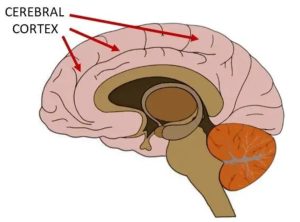
The cerebral cortex controls voluntary movements, including fine and gross motor movements such as:
- Fine motor movements: small, precise movements like writing, typing, and playing musical instruments.
- Gross motor movements: larger movements that involve the entire body like running, jumping and throwing.
- Facial movements: facial expressions like smiling, frowning and raising eyebrows.
- Eye movements: the movement of the eyes like tracking objects and changing focus.
- Speech and language movements: the muscles involved in speaking and forming words like the lips, tongue and vocal cords.
- Hand-eye coordination: coordinating hand and eye movements like reaching for and grasping objects.
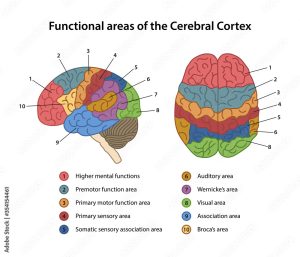
THE PREMOTOR CORTEX
The premotor cortex is a region of the brain in the frontal lobe; it’s involved in planning and executing movements. It is situated just anterior to the primary motor cortex. The primary motors cortex is responsible for generating neural signals that control muscle movements.
The premotor cortex is involved in motor planning and preparation. It receives input from other brain areas that are involved in processing sensory information and integrating it with motor plans. The premotor cortex communicates with the primary motor cortex to generate and refine motor commands.
In addition to its role in motor planning and preparation, the premotor cortex is involved in cognitive processes like decision-making, attention and working memory and it plays an important role in the cognitive control of behavior, allowing us to adapt our actions to environmental conditions and achieve our goals.
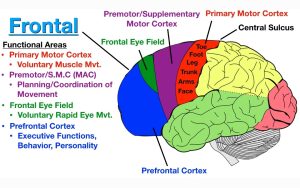
The premotor cortex is involved in the control of movements such as:
- Reaching and grasping: planning and executing movements involved in reaching for and grasping objects.
- Eye movements: rapid eye movements and tracking movements.
- Facial movements: the movements of the lips, tongue and jaw during speech and swallowing.
- Postural adjustments: maintaining balance and stability during movement.
- Coordination of complex movements: playing musical instruments or typing on a keyboard.
DORSAL AND VENTRAL REGIONS
The premotor cortex can be divided into two main regions based on their location and functions: the dorsal premotor cortex (PMd) and the ventral premotor cortex (PMv).
The dorsal and ventral are regions of the premotor cortex, they are involved in the preparation and planning of movements and they each specialize in different types of movements and cognitive processes.
The dorsal premotor cortex (PMd) is in the posterior portion of the premotor cortex; it is involved in the planning and execution of movements related to spatial processing and the manipulation of objects. The PMd has connections with the primary motor cortex and it receives input from sensory areas, including the parietal cortex and visual areas.
The dorsal region is responsible for controlling fine motor movements, posture and balance, reflexes and walking/running.
The ventral premotor cortex (PMv) is in the anterior portion of the premotor cortex; it is involved in the planning and execution of movements like grasping, manipulating and using tools. The PMv has connections with the inferior parietal lobule, which is involved in the processing of sensory information related to objects and actions.
The ventral region is involved in voluntary movements, facial expressions, gait and posture, speech and swallowing.
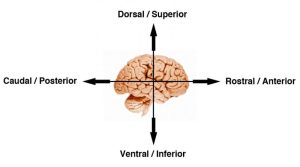
PREFRONTAL CORTEX
The prefrontal cortex (PFC) lies in the premotor cortex. It’s the region of the brain in the front of the frontal lobe and is the most anterior part of the brain; it compromises 1/3 of the entire cerebral cortex!
It is involved in higher cognitive functions like decision-making, working memory, attention and social behavior. The prefrontal cortex is considered to be one of the most evolved and complex regions of the brain in humans and other primates.
The prefrontal cortex is divided into several subregions, each with distinct functional roles. These subregions include the dorsolateral prefrontal cortex (DLPFC) and the ventrolateral prefrontal cortex (VLPFC).
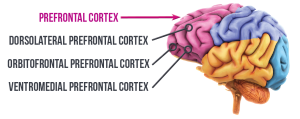
The prefrontal cortex works closely with other brain regions including the basal ganglia, thalamus and limbic system. These connections allow the prefrontal cortex to integrate information from multiple sources and to coordinate complex cognitive processes.
- Voluntary motor movements: planning and executing voluntary motor movements such as reaching, grasping and walking.
- Eye movements: eye movements like rapid eye movements) and tracking an object in motion.
- Speech and language production: speech and language production, including movements involved in speaking and writing.
- Emotion-related movements: regulating emotional responses and behaviors, including facial expressions and body language.
DORSOLATERAL PREFRONTAL CORTEX (DLPFC)
The dorsolateral prefrontal cortex (DLPFC) is a region of the prefrontal cortex that is located in the lateral and dorsal parts of the frontal lobe. It is involved in a wide range of cognitive processes, including working memory, cognitive flexibility, planning, decision-making and attentional control.
The DLPFC plays a crucial role in working memory, which is the ability to hold and manipulate information in the mind over a short period of time. It is also involved in cognitive flexibility, which is the ability to switch between different cognitive tasks or mental sets. The DLPFC is important for planning and decision-making.
VENTROLATERAL PREFRONTAL CORTEX (VLPFC)
The ventrolateral prefrontal cortex (VLPFC) is a region of the brain located in the frontal lobe, in the lower part of the prefrontal cortex. It is involved in decision-making, emotional regulation, social cognition and language processing.
The VLPFC plays a role in inhibiting inappropriate or irrelevant responses which impacts impulse control, decision-making and flexible thinking. The VLPFC is also involved in working memory and it plays a role in social cognition, meaning it helps us understand and interpret the emotions and behaviours of others.
ACTIVITY
Color and label the lobes of the cerebral cortex and their functions in the diagram below:
FRONTAL (planning, control, motor)
PARIETAL (sensory perception, proprioception)
OCCIPITAL (vision)
TEMPORAL (memory, sound)
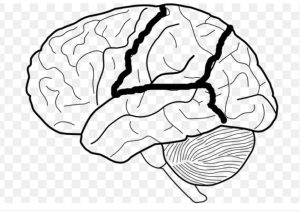
Please provide your feedback here